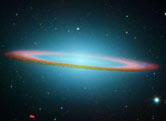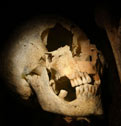The True Story of Man Book Sample

Introduction To The Creation
At the end of the year 2002 AD, newspapers and magazines began covering a breaking story. This was a new story about the beginning of our universe. It was a "big bang" story with a new twist. There were actually two big bangs. The first bang was the instantaneous beginning of matter, which consisted mostly of hydrogen, helium, and traces of two other elements. This matter cooled and remained cold for 100 million years until the second bang, which was the ignition of the first stars.
Science understands that this earth was not ready for man to inhabit billions of years ago while it was in its formative stages. There was no coal or oil for man to use as energy sources. And the crust of the earth had no concentration of elements for man to mine efficiently.
The coal and oil had to be formed from large forests and masses of animals being buried instantly under water born silt caused by catastrophic destructions. These deposits were crushed under tons of silt for millions of years in order to form coal and oil.
Copper and other elements had to be leached up to the surface through the process of volcanism. These elements were deposited and concentrated in the crust of the earth near the vents of ancient volcanoes.
The process of forming coal and oil, and the leaching of mineable elements to the surface are known as planet building processes.
Now that science can understand the planet building processes, we may be able to detect the same processes in universe building.
These clouds of hydrogen in the "first bang" continued in darkness for 100 million years. By gravitation, they formed clouds around the densest regions of dark matter. At the end of this long night, the dense clouds of hydrogen collapsed by way of gravitational force and ignited to become the first stars. (This was the "second bang").
But how did dark matter form dense regions? Scientists theorized that the original "big bang" produced a very smooth distribution of matter. So they set a goal to find out why matter clumped into dense regions.
In the 1960’s, scientists detected the cosmic background radiation left over from the original "big bang." In Nov. 1989, the Cosmic Background Explorer (COBE) satellite was launched to map the background radiation. The map showed subtle "hot" and "cold" spots around the universe after the "big bang."
In 2001, the Wilkinson Microwave Anisotropy Probe (WMAP) was launched to give an even greater detailed map of the background radiation. It revealed a pattern of extremely slight variations of "hotter" and "colder" spots in the heat left over from the earliest days of the universe before the first stars ignited and the first galaxies formed. This indicates a slight deviation in the distribution of matter in the universe.
It is felt that the deviations were the primeval seeds for today’s galaxies.
Astronomer Margaret Geller maps the galaxies we see today. She says the universe is not just an uninteresting random distribution of galaxies. She says there are striking and complex patterns and structure. One striking pattern is a loose formation of galaxies 500 million light years from earth in all directions forming what is called the "great wall."
Since we see great design on earth today, there must be a great designer. So the clumping of dark matter into dense regions was not a random event. Continued in "The True Story of Man: The Egyptian Chronicle. "
The True Story of Man: The Egyptian Chronicle
-
Category: Non-Fiction
-
Format: Softcover, 192 pages
-
Price: $15.95
-
Available: Amazon.com
-
ISBN-10: 1594533601
-
ISBN-13: 978-1594533600
-
Dimensions: 8.8 x 5.8 x 0.6 inches
-
Jones Harves Publishing (December 31, 2004)
Contact: TheTrueStoryofMan@yahoo.com
The True Story of Man: The Egyptian Chronicle. Buy this amazing book here.
Published in December of 2004 by Jones Harvest Publishing.
